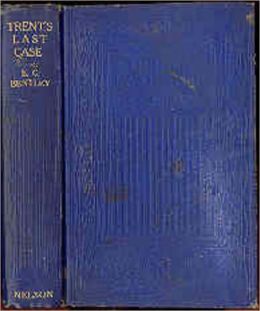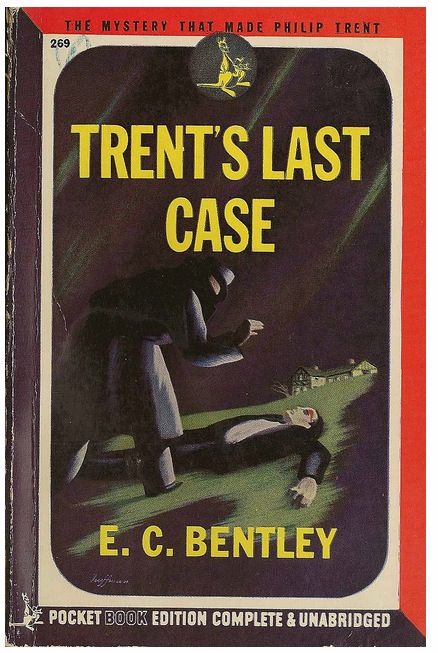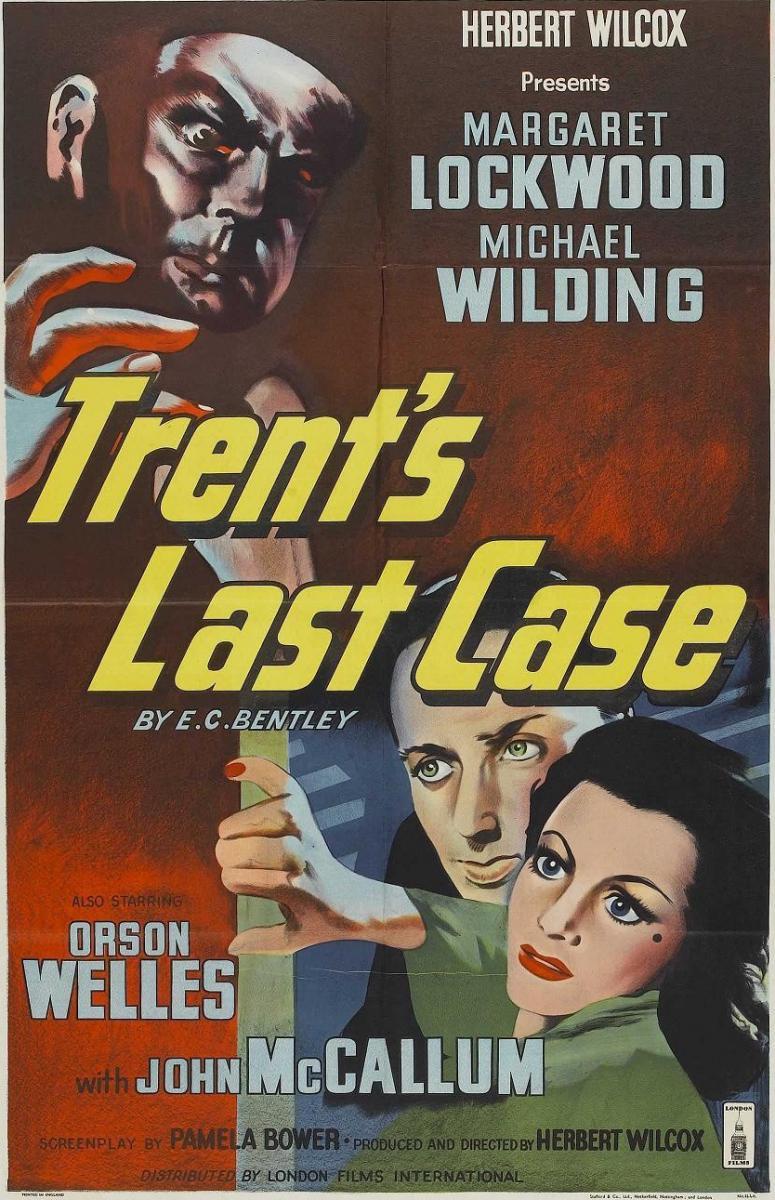By E. C. Bentley (1875-1956).
The Century Company.
1913. 298 pages.
Online HERE, HERE, HERE, HERE, and HERE.
Filmed several times: 1920 (IMDb), 1929 (IMDb), and 1952 (IMDb).
[a.k.a. TRENT'S LAST CASE]
BETWEEN what matters and what seems to matter, how should the world we know judge wisely? When the scheming, indomitable brain of Sigsbee Manderson was scattered by a shot from an unknown hand, that world lost nothing worth a single tear . . .Seminal, influential, and innovative, The Woman in Black has enjoyed almost universal admiration for the past one hundred years:
[Article excerpt] . . . One of the seminal novels of the mystery genre was Trent's Last Case, written by E. C. Bentley in 1913.
Bentley was a lawyer, journalist and literary critic whose fame rests on a very slender output. After Trent's Last Case came Trent's Own Case (written in collaboration with H. Warner Allen) in 1936 and then Elephant's Work in 1950.
He also wrote short stories, some of which were collected in Trent Intervenes in 1938. Each of these 12 stories involves puzzles and very little action. Often the crimes have little to do with reality. A man is murdered by an explosive charge in his golf club. Or there may be a poisoned lipstick. As often as not, Trent, who is interested in the game for its own sake, lets the killer off because of extenuating circumstances. It is all an elaborate hocus-pocus, and a lot of fun. . . . — Newgate Callendar, NEW YORK TIMES (May 3, 1981)
[Full review] Although he just fails of making Philip Trent a personality, Mr. E. C. Bentley, in The Woman in Black, has constructed a detective story of unusual originality and ingenuity. An American multi-millionaire, a power in the world's finance, is murdered on his estate on the south coast of England.
Half a dozen persons are presented to the reader as possible objects of suspicion—the dead man's young wife, the 'Woman in Black,' his American secretary, his English secretary, an elderly Englishman with whom he has had a violent quarrel, his butler, and a French maid.
Trent, a painter, who on several previous occasions has shown decided talent in solving criminal mysteries, is sent to the scene of the crime by a great London newspaper.
There is the inevitable foil in the person of Inspector Murch, of the official police, whose years of experience in the practical service of Scotland Yard avail him but little when pitted against the superior imagination of the brilliant amateur.
Trent finds the key to a greater part of the mystery in a pair of worn patent leather shoes that had belonged to the dead American multi-millionaire, and in certain finger prints.
But the story of the affair that he writes out but does not send to his newspaper lacks accuracy in one or two important points, the explanation that seems to cover everything when the book has run less than two-thirds its course is not quite complete, and it is not until the final chapter is reached that the reader is in possession of the full account of the events surrounding the death of Sigsbee Manderson.
In his use of Americanisms, Mr. Bentley is rather better than most English writers, which is not saying a great deal. — "New Books by New Writers," THE BOOKMAN (May 1913)
E. C. Bentley was a British newspaperman. He only wrote four mystery books, but he was immensely influential and prestigious in his time. His reputation peaked around 1940, when first Dorothy L. Sayers, and then Howard Haycraft, identified his Trent's Last Case as the start of the modern mystery novel.
Haycraft was particularly impressed with Bentley's naturalism, a low key approach that excluded melodrama. Sayers admired the many cultural references in Bentley, and what she regarded as his fine writing. Both critics were also impressed with Bentley's characterization. They felt Bentley brought new realism, craftsmanship and believability to the detective novel, which they asserted had been largely dominated by melodrama and purple prose before Bentley's time. — Mike Grost, GAD Wiki
[Review excerpt] . . . With its unique detective figure and complex plot, Trent’s Last Case stands the test of time--and may even change the way existing fans of Golden Age classics view their favorite novels. . . . — Stefanie Pintoff, THE RAPSHEET BLOG (June 26, 2009)
[Excerpt] . . . Bentley wrote the book as something of an exposure of detective stories, a reaction against the artificial plots and sterile characters of his predecessors. But despite Trent’s fallibility, his detective work is skillful. The ending, with its surprise twists, is eminently satisfying. . . . — Edward D. Hoch, MYSTERY*FILE BLOG (April 20, 2009)
[Excerpt] . . . As Edward Hoch noted in his review of Trent's Last Case, opinions on Bentley's book have been somewhat mixed, with Ellery Queen and G. K. Chesterton among those shouting hosannas to the heavens and many later reviewers not nearly so enthusiastic. I guess I'd put myself somewhere in the middle of the pack. Early on, I found myself thinking that this was one of the most readable and entertaining books I'd read for quite some time. I'm sorry to say that the center did not hold, although things did pick up again near the end. . . . — William I. Lengeman III, TRADITIONAL MYSTERIES (February 4, 2012)
[Excerpt] . . . As for the mystery itself, obviously I can’t tell you all that much, but I will say that it’s a good one. It’s a little convoluted and impossible for readers to guess on their own, but it’s satisfying all the same. The whodunit is supposedly solved halfway through the book, and it’s then that things get truly interesting. There are twists, turns, yet more twists, and always more to the truth that you suppose: you don’t get the full story until the very end. Best of all, Trent’s Last Case is very much a psychological mystery. More than the details of the crime, what keeps you reading is being eager to find out what motivated this or that person to do such and such – and that’s my favourite kind of crime story. . . . — Ana S., THINGS MEAN A LOT (August 30, 2010)Resources:
- ONTOS took a look at ELEPHANT'S WORK in a post HERE and TRENT INTERVENES HERE; cover blurbs for two of Bentley's books are HERE.
Category: Detective fiction



No comments:
Post a Comment